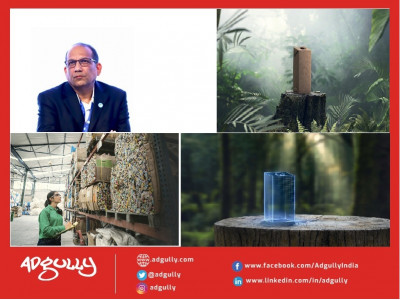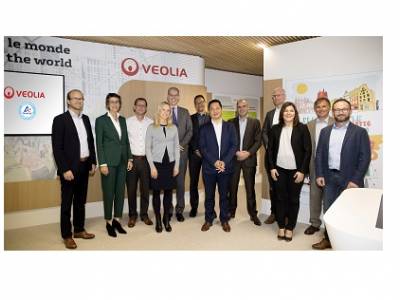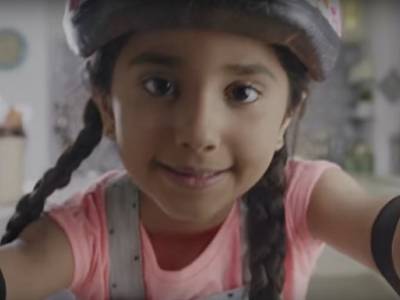Our aim is to deliver the world’s most sustainable food package: Ashutosh Manohar
The packaging industry in India has witnessed constant changes over the years, while it emerged as one of the largest sectors in India’s economy. Sustainable food packaging can make a difference, help mitigate climate change and address other environmental concerns while feeding a growing population. In the current scenario, packaging plays a critical role in the global food delivery system, but it can also cause problems for the planet.
Tetra Pak,  a world leading food processing and packaging solutions company, has been working closely with its customers and suppliers to provide safe, innovative and environmentally sound products that each day meet the needs of hundreds of millions of people in more than 160 countries. Their aim is to create cartons made solely from responsibly sourced renewable or recycled materials, fully recyclable and carbon neutral.
Tetra Pak has rolled out its ‘Go Nature. Go Carton.’ campaign, through which the company is announcing Tetra Pak’s ambition to deliver the world’s most sustainable food package that not only meets the needs of the food industry and consumers but also has a reduced impact on nature and the climate. The carton packages at Tetra Pak are made of on average 70% paperboard. With the campaign ‘Go Nature, Go Carton’ Tetra Pak aims to reduce the use of plastic, remove aluminium and increase the use of responsibly sourced paper-based content in our carton packages.
In an exclusive interview with Adgully, Ashutosh Manohar, Managing Director (South Asia Markets), Tetra Pak, elaborates on their ‘Go Nature. Go Carton.’ campaign and how the company is planning to deliver the world’s most sustainable food packaging.
Packaging is the face of every brand. How has packaging evolved in the last 10 years? What are some of the innovations you have introduced in Tetra Pak to help brands to present interestingly?
Packaging has always been a medium of communication for brands who want to engage with their consumers in innovative ways. Over the years we have seen packaging move from being just an aesthetic element designed to grab attention, to a medium of engagement through innovations like unique QR codes, augmented reality and more. At Tetra Pak also, we have seen a growing hunger among brands to create a unique experience for customers. This could be through packaging designs like the latest Disney and Marvel inspired range by Keventer Agro where multiple designs are part of the same range, or material effects like the Tetra Pak Craft packaging launched by Dabur and our locally manufactured holographic packaging for Ghee by Warana Dairy. It could also be through activations like Dabur’s new Doraemon Sip & Win contest using dynamic QR codes by Tetra Pak, or through experimentation right-sizing like Parle Agro’s new Smoodh range of flavoured milk which comes in a 90ml pack for just INR 10. We are fortunate to be the preferred partners for the biggest food & beverage brands in the country, supporting them through design, product innovation, state-of-the art processing & packaging solutions including multi-design printing capabilities, while also helping them meet their environmental sustainability goals.
That said, one of the biggest shifts we have experienced is increasing awareness about the climate impact of packaging. From being carefree about the package to a conscious mindset, our consumers have started making more responsible choices, and demanding packaging that is better for the environment. Here too, we have a great head-start, with our paper-based and recyclable packaging, supported by a strong collection & recycling ecosystem that we have built over two decades.
There is a severe concern to protect our environment. What have been some of the sustainability initiatives you have been following to bring transformation in packaging?
Our ambition is to deliver the world’s most sustainable food package – that is made fully from renewable or recycled materials, is fully recyclable and carbon neutral, allowing ambient distribution while meeting stringent food safety requirements. We already have a great start, with Tetra Pak cartons being paper-based, recyclable, and increasingly being recycled in the country.However, we do want to keep moving forward on this journey to create the package of the future.
This idea of future packaging can only be brought to life with significant industrial and technical breakthroughs including expanded use of renewable polymers, replacement of aluminium with alternative barrier that can still protect the packaged food from oxygen and light, simplification of packaging material structure and increase in plant and paper-based content, and innovation in equipment and processes to incorporate structural changes.
We have a clear roadmap to deliver against the above requirements and have crossed many milestones in that journey across the world. For example, we introduced the first package made fully from plant-based materials. We’ve also launched bio-based caps made from plant-based polymers and sold over 12 billion units already. Our first-generation non-foil packaging solution is on the shelf, where aluminium foil has been replaced by a more environmentally-sound polymer film, paving the way for future development with increased renewable and fibre content. These are just some of the innovations being done at Tetra Pak to ensure that we protect food and the planet.
Tell us more about the ‘Go Nature. Go Carton’ campaign. What’s the objective and thinking behind this campaign and how do you plan to promote this campaign and create awareness amongst your stakeholders?
Food packaging plays a critical role in feeding the world – helping keep food safe, nutritious, tasty and available for people everywhere. At the same time, it can also impact the earth’s limited resources and the climate, pointing towards a trade-off between people and the planet.
With the ‘Go nature. Go carton.’ campaign, we are announcing our ambition to deliver the world’s most sustainable food package, that not only meets the needs of the food industry and consumers, but also has a reduced impact on nature and the climate.
Comparative studies often show that our paper -carton packages have a lower carbon footprint than alternative options – such as glass, plastic or metal packages. But we are keen to evolve and adapt, considering the rapidly changing requirements and growing expectations from customers, society and regulators – and hence, the ambition to create the ultimate sustainable food package.
This means creating cartons that are fully made of renewable or recycled materials, that are responsibly sourced, therefore helping protect and restore our planet's climate, resources and biodiversity; contributing towards carbon-neutral production and distribution; are convenient and safe, therefore helping to enable a resilient food system; are fully recyclable.
Creating this future food package will not be easy and will also not happen overnight. But we remain fully committed towards this goal. After all, it’s an integral part of our brand promise ‘Protects what’s good’ - protecting food, people, planet.
And we’re not on this journey alone…because we will be collaborating with our customers, suppliers and other stakeholders across the value chain to take an industry-wide view, not just looking at the environmental impact of our products, but also the production, manufacturing and distribution process, and beyond.
What are some of the challenges you face in the overall ecosystem in implementing the sustainability practices and how are you addressing the same in India?
Our aim is to create packages that keep food safe, but not at the cost of the planet. However, this ambition requires a consolidated effort and significant contribution from industry, policy makers and consumers.
One of the biggest challenges that we face today is lack of segregation of waste at source and littering problems, which prevent recyclable waste to be recovered successfully. Over the years, we have introduced many initiatives such as Alag Karo, Go Green with Tetra Pak and work with over 30 collection and awareness partners in the country to help to institutionalise source segregation of waste and sensitise the stakeholders involved. These efforts have helped bring in strong behaviour change, spreading awareness around making better buying decision and helping proper disposal of the waste, but a lot more needs to be done.
While awareness is important on the one hand, it is also important for policy and legislation to evolve accordingly and take a long-term strategic view of environmental sustainability. For example, the endemic issue of littering in India demands strong waste management infrastructure, legislation needs to be uniform across the country, clearly assign the right roles and responsibilities to various stakeholders and be enforced strongly.
Another big challenge is making sure that entrepreneurs who enter the waste management or recycling business can build a sustainable business. As an example, if consumers, companies, institutions were to consciously choose recycled materials over virgin material, it would create a positive ripple effect in the entire value chain.
And these are just challenges at the ‘end of life’ of the product. If we zoom out, end-of-life or recycling is only a small part of the life-cycle of a product. We need to take a full view from raw material, to manufacturing, distribution and end of life to truly be able to build a low-carbon circular economy. Think about where the raw material is coming from, is it responsibly sourced, is the distribution environmentally efficient, and more.
How is the future looking for the carton industry in the next 3 years? What are some of the trends you will notice in the packaging industry especially in the Tetra Pak packaging where you are pioneers and innovators in packaging?
The future of the carton industry is certainly bright, driven by evolving consumer demand for safe food, on the go and at home. As per a recent consumer trends’ report by Mintel, consumers are looking for more control over their lives, along with new opportunities enjoyment and experiences. There is also increasing awareness about climate impact, with consumers holding brand to account on their progress against their goals.
Consumer will demand more premium offerings with a better consumption experience, pushing brands to introduce new packaging shapes, sizes, designs with better functionality. With the emergence of premium product categories like plant-based beverages and meal replacement beverages, this trend is becoming even more pronounced.
On the other end of the spectrum are consumers looking to shift from loose/ unpacked food to packaged food to ensure hygiene and safety, while staying connected to their traditional flavours and recipes like buttermilk, lassi, haldi-doodh, etc. Brands will, therefore, need to find a fine balance between familiar flavours, differentiated packaging, across a variety of pack sizes and price-points.
Another big trend, as shared earlier, is the convergence of health and sustainability. Products and experiences with both health and sustainability benefits will drive appeal as people move from careless to responsible consumption. From environmental claims on the package, to listing the overall climate impact of a product on e-commerce sites, consumer demand for more information will continue.














Share
Facebook
YouTube
Tweet
Twitter
LinkedIn